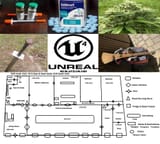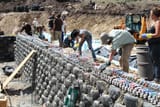>>2921491
Tires contain zinc (1–2% by weight), and trace amounts of lead, cadmium, and other heavy metals.
Over time, rain or snowmelt that contacts exposed tires or enters poorly sealed walls may leach these into nearby soil or water systems.
In some studies, zinc levels in water runoff from tire materials have exceeded EPA freshwater quality standards.
How to Measure It:
Soil Testing
Take baseline soil samples before construction (especially downhill or downslope from tire walls).
Repeat 1–2 years later and test for:
Zinc (Zn)
Lead (Pb)
Cadmium (Cd)
Chromium (Cr)
Tools: Contact a certified lab or use an EPA-approved home soil test kit.
Water Testing
If you're near a well, spring, or catchment system, test runoff or nearby groundwater for:
Zinc
pH levels (acidic water leaches more)
VOCs (less common, but test if tires are used inside or unsealed)
Frequency: After heavy rains or spring melt; annually otherwise.
Comparing to Standards
Compare test results to:
EPA Soil Screening Levels (SSLs)
EPA Maximum Contaminant Levels (MCLs) for drinking water
Example Risk Thresholds (EPA Standards):
Contaminant Safe Soil Level (residential) MCL (Drinking Water)
Zinc ~23,600 mg/kg (screening level) 5 mg/L (secondary standard)
Lead 400 mg/kg 0.015 mg/L
Cadmium 70 mg/kg 0.005 mg/L
Ways to Mitigate or Avoid the Risk
Use vapor barriers and drainage layers behind tire walls.
Never leave tires exposed to the open air or moisture.
Install gutters, swales, and French drains to control water flow.
Regularly inspect and maintain sealing layers (e.g., plaster or concrete).
















